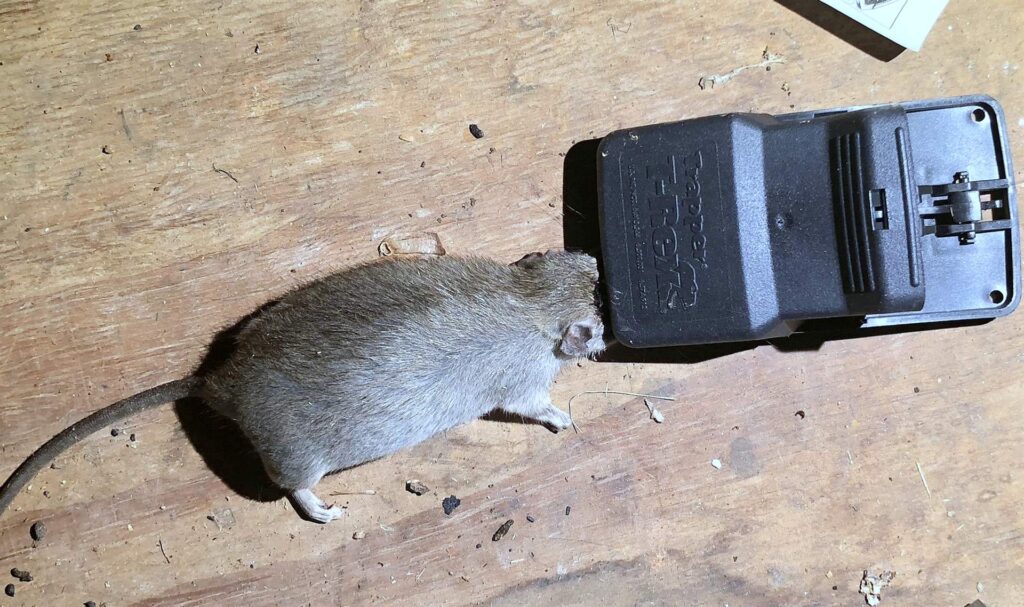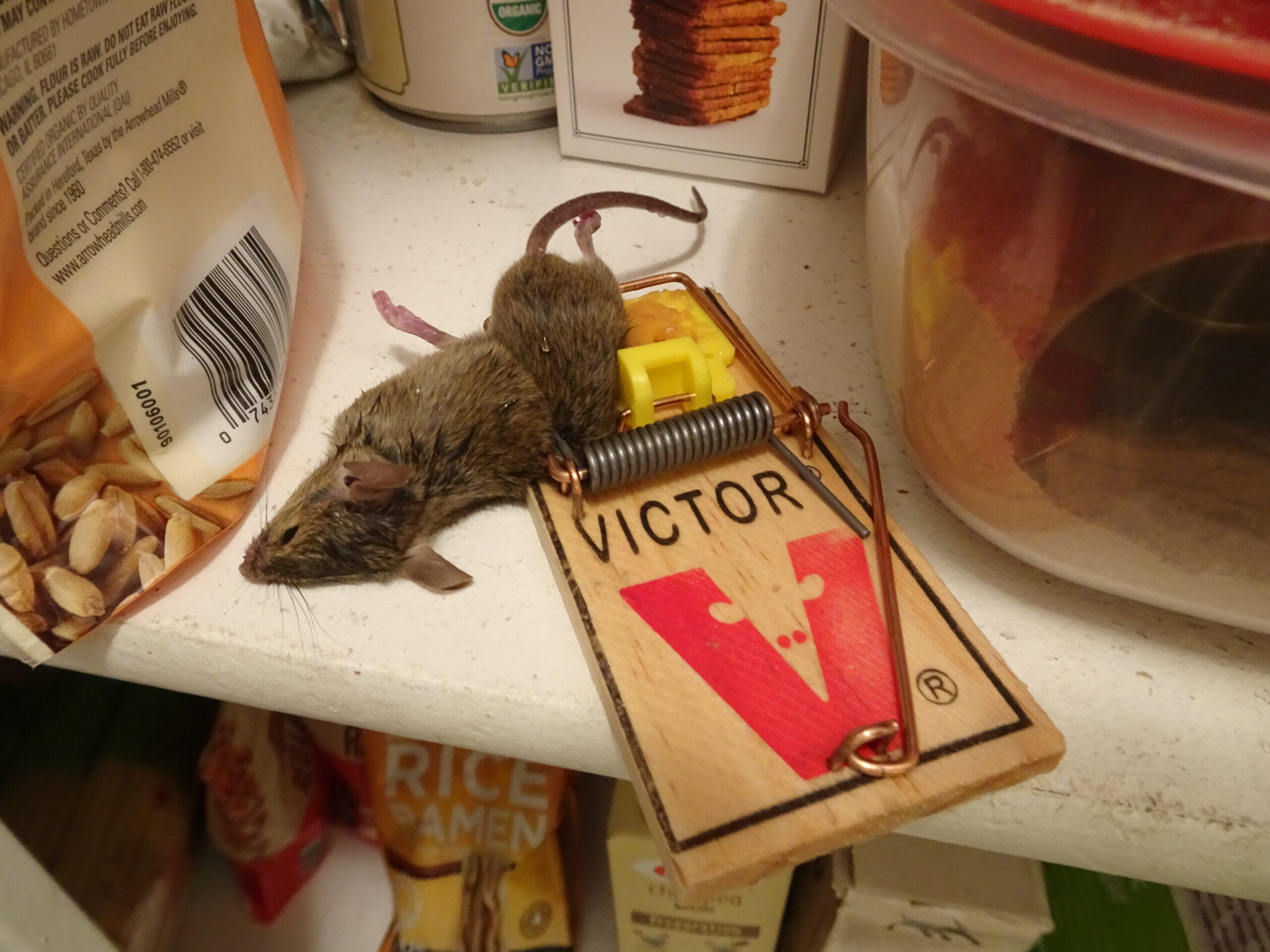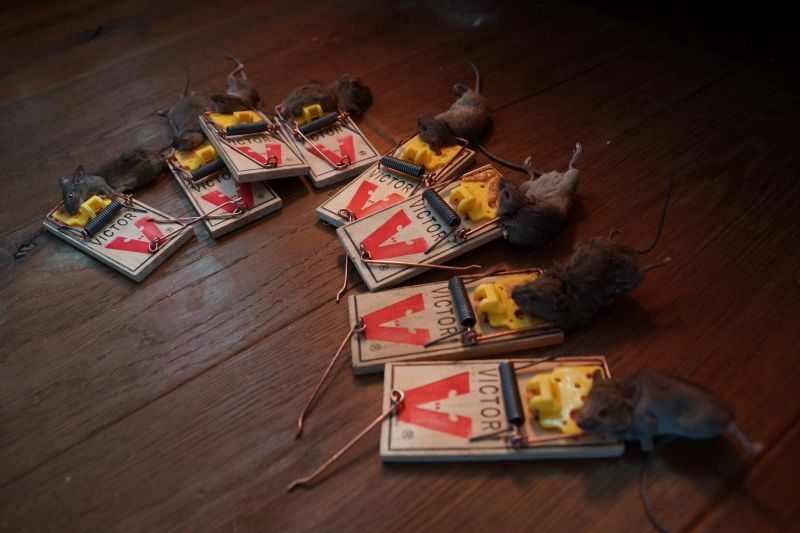Rats & Mice Removal

Rats and Mice Removal
Rats and mice are small but problematic nuisance animals. While they might be quiet, hidden creatures that you rarely see, their presence is a problem for homeowners. Continue reading to learn more about rats and mice and how you can remove them for good.

What problems can rats and mice cause?
Rats and mice are heavily diseased pests that can spread many different illnesses to humans and their pets. The hantavirus is commonly carried by rodents and actually kills 40% of all the people it infects. Rat-bite fever is a serious illness that must be treated by antibiotics in order to survive. These are just two of the many other potentially fatal illnesses that rats and mice can give to humans. These diseases are spread through the droppings they leave in places, coming into contact with any urine or saliva-contacted surfaces, or even scratches or bites from the animals.
To make matters worse, rats and mice are also incredibly destructive creatures that create messes out of even the nicest homes. Rats and mice love to chew through virtually any building material, giving them the potential to access your whole house. These rodents chew through wiring, potentially causing serious risks for fires. If that was not bad enough, mice and rats also ruin your insulation, ruining the energy efficiency of your home. As can be seen, removing rodents should be a top priority.
How can I prevent rats and mice?
While being able to prevent mice and rats can be difficult, it is not impossible. With some hard work and thorough inspection, you might be able to keep these critters out of your home once and for all. To begin this prevention process, you first will need to look over your home’s exterior and interior, searching for any potential problem areas. Problem areas include holes, gaps, or cracks that could allow rodents access to your home. Once you have found all problem areas, it is important to seal them up tightly. Use steel wool, all-weather sealant, or aluminum sheeting to patch up these areas. Check your home again, and if all looks well, there should be no problems.
How do I remove rats and mice?
Rats and mice are some of the most common nuisance pests that make their way into homes. Luckily for homeowners, small rodent problems can usually be fixed with a do-it-yourself method of trapping and removing the mice and rats from your home. You can use glue traps, non-lethal box traps, snap traps, or any of the other hundreds of rodent traps on the market. While this works for many situations, other situations can get rapidly out of hand. Since rodents can repopulate so quickly, it is important to call a wildlife removal company as soon as you know you cannot solve the problem.
Why hire New Jersey Wildlife & Pest Control?
Here at New Jersey Wildlife & Pest Control, our expert team members have years of experience in dealing with many different pest control scenarios, and rats and mice are among the most common. At New Jersey Wildlife & Pest Control, our primary focus is on the client, making sure that we provide you with the best service possible at the lowest price possible. With our patented pest removal techniques, we have cleaned up some of the toughest pest control jobs in New Jersey. If you are dealing with a minor or very serious rat and mouse infestation, do not hesitate to give us a call here at New Jersey Wildlife & Pest Control!

Difference Between Rats and Mice
Mouse and rat are two rodents that are notorious for invading homes and buildings. They are both creepy, spread nasty droppings, and cause a lot of damage. These creatures are responsible for many unpleasant things, however, it’s often not easy for the untrained eye to differentiate between the two.
If you do have rodents disturbing your peace at home, and you want to be sure which one it is; rat or mouse? Continue reading to find out the differences between rats and mice…
Mouse vs rat: what do they look like?
At first glance, rats and mice really look very much alike, especially if you really didn’t know the difference between the two. The most notable difference between rat and mice is their body size. Both are small mammals, but a mouse is much smaller than a rat.
Rats can grow up to 20 to 40 cm in length, while a mouse will often not grow bigger than 20 cm (usually 4 to 7 inches in length). Therefore, an adult rat is as much as two times bigger than an adult mouse. But it gets tricky when you’re comparing an adult mouse with a young rat because then the two will be almost indistinguishable.
But there are other differences in the appearance of these two rodents; first, an adult mouse usually has ears that are noticeably bigger than their bodies, while a young rat will have obvious big feet. Mice also tend to have light gray bodies and a belly with a much lighter shade, while rats usually have brown bodies.
What do they eat?
Both mice and rats are omnivores, they eat both plants and animals and eat very similar things. But since rats are bigger than mice, they tend to eat bigger meals and will go for food like meat, fish, cheese, etc. Mouse, on the other hand, prefers to eat more fruits, vegetables, nuts, cereals, and grains.
These animals will eat anything humans eat and more, this is why they are able to survive in very diverse conditions. Rats and mice will raid their environment for anything they can find, and will not hesitate to attack things like clothes, paper, plastics, wood, etc. Mice, especially, prefer to build nests in shredded paper or clothes, while rats build nests in attics and walls. Roof rats will live in trees, while Norway rats will live in burrows under buildings or plants.
How do they Breed?
An adult female mouse will give birth about 5 to 10 times a year and the average litter size ranges from 5 to 8 pups, although it can be as few as 3 pups or as many as 14 pups. The average litter size for the adult female rat is about 6 to 10 pups, and they will usually give birth up to 6 times a year.
Both rats and mice develop very quickly. A male rat reaches maturity in about 6 to 10 weeks and will be ready to mate, while a female rat reaches sexual maturity in about 8 to 12 weeks. Mice take longer to mature, and at about 4 to 8 weeks of age, they are already adults who are ready to breed.
How do they behave?
Rats and mice behave very differently. Mice are bolder than rats, even though they are small, they are very curious creatures and love to explore new things. Rats, on the other hand, are often very cautious and careful. A rat is usually very fearful and will avoid unfamiliar things, which is why they are not easily tricked with baited traps. It’s easier to trap mice because their curiosity gets the better of them.
Mouse vs Rat: Droppings
Rat droppings are bigger than mouse droppings, as you would expect because rats are bigger than mice. The droppings of the two rodents look like black grains, but rat droppings have rounded edges and are shaped like capsules, while mouse droppings tend to have pointy edges.
Got a Rodent problem? New Journey Pest Control at your service!
Here at New Journey Pest Control, our expert team members have years of experience in dealing with different pest control scenarios, and rats and mice are among the most common.
At New Journey Pest Control, our primary focus is on the client, making sure that we provide you with the best service possible at the lowest price possible. With our patented pest removal techniques, we have cleaned up some of the toughest pest control jobs in New Jersey.
If you are dealing with a minor or very serious rat and mouse infestation, do not hesitate to give us a call here at New Journey Pest Control!

How to Get Rats and Mice Out of the Attic
As some of the most plentiful animals in urban and rural areas alike, rats and mice will likely find their way into your property at one point or another. While that doesn’t necessarily seem that bad, things can go downhill quickly if they meander into your attic, leaving you to go out of your way to remove them. Unfortunately, without the right help, it can prove not easy. Luckily, we’re here; so, here’s how to get rats and mice out of the attic.
Find the Rodent(s)
The first task in taking care of any invading animal problem is finding the animal you’re planning to remove. While we’re assuming the rat or mouse on your property is in your attic, it could easily find itself elsewhere. Either way, it’s crucial to quickly see where it is, using a few easy clues.
Rodents are incredibly social animals, meaning you’ll likely hear them moving about, if not see them come within range of you or someone else. Using this, you can frequently find where rats or mice are going just by listening. The little pitter-patter of their feet is very distinguishable and should be easy to follow.
Someone also can follow its droppings, which most frequently appear as tiny pellets to pea-sized pieces. These methods will bring you closer to the rodent, which is vital in determining how many rodents there are. After all, how can you know how much of something there is without seeing it?
Sealing Entrances and Trapping
Once you’ve located the rodent, the next step is to seal off all but one entrance. If there is a rat or mouse in your attic, there will likely be a few small spaces that they’ve used as entrances. These small, sometimes quarter-sized, holes need to be quickly filled with caulk or netting to prevent the animal from going back through it.
After all but one entrance is sealed, you can set up a trap to capture the animal. Of course, there is also the option to let a professional pest control company take care of it for you. There are two general types of traps that you can use for mice and rats, with those being lethal and non-lethal traps. Both sell as humane products, either quickly putting an end to a rodent’s life or leaving them untouched.
Lethal traps are usually spring traps, which you’ll see commonly used with a bit of piece of cheese or the like to attract then kill a mouse or rat. Non-lethal traps, on the other hand, are ones like cage traps, which have a pressure-sensitive plate that triggers a closing door. Non-lethal is slightly more complicated to use, although they don’t put down rodents.
No matter your choice, it’s essential to place the trap outside the last entrance (the one you left uncovered). As the options for mice and rats to go are limited, they’ll eventually have to move towards your trap before being trapped.
What to Do Next?
Once you’ve trapped a rat or mouse, then it’s time to get the animal out of the attic. Depending on your state or area, there may be different regulations covering what you have to do with the rodent next, as it might return where it came from.
The easiest things are either to call local animal control or a pest control specialist, like New Journey Pest Control. Either option puts you in communication with a specialized control professional, who can either remove the animal for you or answer any questions. After all, you likely won’t be able to release the mouse or rat immediately after capturing it, without it returning or another animal taking its place.
